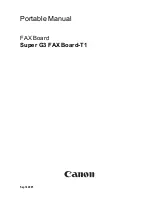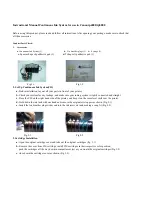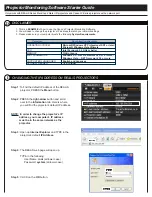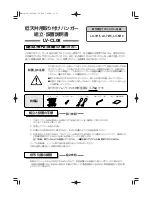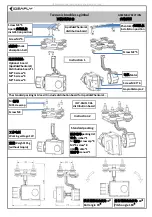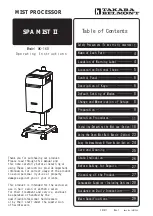
Charge Sensor
012-06991A
2
Setup Procedure
1. Insert the 8-pin DIN plug into analog input A,
B, or C of the ScienceWorkshop Interface box.
Note that the Charge Sensor will plug directly
into the interface box (Figure 1a), or an
extension cable (CI-6516, available separately)
may be used (Figure 1b).
2. Attach the BNC/alligator clip probe to the BNC
connector on the amplifier box by lining up the
alignment pins. Push the BNC connector in
slightly and turn clockwise one-quarter turn to
lock.
3. Discharge the input capacitor by pressing the
ZERO switch. Set the sensitivity of the sensor
by changing the position of the GAIN switch.
The table below shows the relationship between
the position of the GAIN switch and the
measurable full-scale input voltage:
Gain Switch Position
Full-Scale Input ( ±volts)
1
10.0
5
2.0
20
0.5
4. Set up the Charge Sensor in your data
acquisition software, and open a Meter display.
G
A
IN
ZER
O
5
1
20
Q
CH
AR
GE
SE
NSO
N
CI-6555
Q
+
-
GAIN
ZERO
5
1
20
Q
CH
AR
GE
SE
NS
ON
CI-6
555
Q
+ -
Figure 1
Two ways to connect the Charge Sensor to the
ScienceWorkshop Interface box.
a
b
CI-6516 extension
cable (available
separately)
Tips On Use of the Charge Sensor
1. When used on the most sensitive range (X20),
the Charge Sensor may display a small offset
voltage. That is, pressing the ZERO switch may
not cause the voltage to go exactly to zero.
Although this residual voltage is typically quite
small (less than 0.1 volts), it will be constant for
any particular GAIN setting and can be
subtracted from the final measurement to give a
more accurate reading.
2. The extremely high input resistance of the
sensor also makes it sensitive to stray
electrostatic fields in the immediate vicinity of
the case. To minimize the influence of static
fields and for the greatest accuracy, follow
these guidelines:
• Plug the Charge Sensor directly into an
interface (avoid using the extension cable, if
possible).
• Stabilize the sensor by mounting it on a rod
stand using the mounting nut on the sensor
case.
• Position the sensor and interface box as far
away from the experiment as possible.
• Wrap the sensor case in aluminum foil.
(Wrapping the sensor in aluminum foil will
not only stabilize the readings but will
demonstrate Gauss’s theorem in showing
that there can be no net field within a hollow
conductor.)
Note: Higher frequency fluctuating fields
(such as 50 or 60 Hz) will usually not be
detectable unless you are viewing the output
of the sensor on an oscilloscope.
Note: This instruction sheet was written
assuming that the user is familiar with
ScienceWorkshop or DataStudio™. Users
can gain familiarity by working through the
tutorials provided with ScienceWorkshop or
from DataStudio’s online help.
analog channel
a, b, c
Summary of Contents for CI-6555
Page 4: ......





